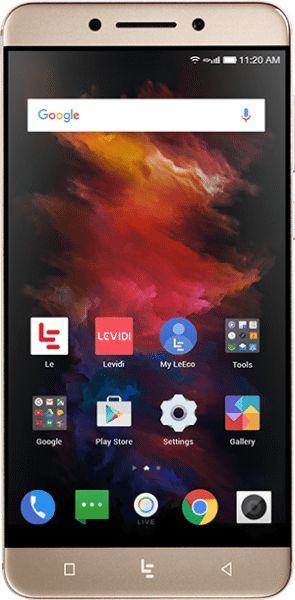
When Julie surveyed who would be interested in testing an Android phone I was intrigued. Recently Julie evaluated the iPhone 7 and found that she preferred the Android environment over the iPhone. In contrast, I have used an iPhone since the 4S came out and now I have an iPhone 6 as my main phone. The phone in question is the new Le Pro3 which features a newly released Qualcomm® Snapdragon™ 821 CPU. It’s sure to be fast, but what will I think of the rest of the hardware and the version of Marshmallow that it runs? Read on to find out….
The full name of this device is the LeEco Le Pro3 Ecophone. The branding of implies that the phone is a key, if not the central, component of the LeEco ecosystem. On the startup screen, the caption below the LeEco logo occasionally boasts, “I’m not just a phone, but an integrated internet ecosystem.” Other hardware aspects of the ecosystem include (formerly Visio) TVs, and a soon to be released electric bicycle and a self-driving EV car. Software aspects include cloud storage and video streaming from content partners, the most notable (in the west) being Showtime.
LeEco is growing in many directions, and it appears that LeEco is positioning itself as a high-tech hardware provider and a high-value content provider at the same time. Generally, high-tech hardware providers, like Apple, Samsung, and Motorola release products which are technology disrupters. Their software or cloud offerings are designed to enhance the enjoyment of the hardware. (Granted, iTunes has become a venerable content provider itself.) Amazon, a high-value content provider, manufactures hardware only as a means to deliver its content. LeEco, with the Pro3, is trying to be all things – a provider of high-tech hardware that is tailored to deliver high-value content.
Unboxing
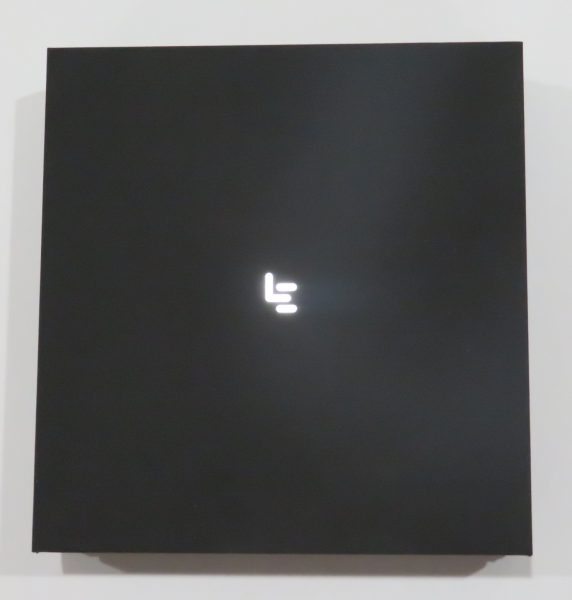
The Pro3 comes in a square matte black box with an embossed silver Le emblem on the top. The base of the box includes a description of the various features. The Pro3 certainly has the performance hardware and specifications to be considered as a top tier device. The hardware specifications reads like the latest news column of a mobile phone industry blog:
- Connectivity: LTE-A, HSPA/+, UMTS, EDGE.GSM, Wi-Fi 802.11 a/b/g/n/ac (2.4 GHz & 5 GHz), Bluetooth v4.2, GPS, Glonass, NFC
5.5 Full HD Display, 403 PPI - Qualcomm Snapdragon 821 Processor
- 4GB LPDDR4 RAM, 64GB UFS2 storage
- 16MP rear camera with AP, PDAF, Dual LED. 8MP 1.4 um front camera
- Qualcomm Quick Charge
- 4070 mAh battery (typical)
- DTS-HD Master Audio
- DOLBY ATMOS
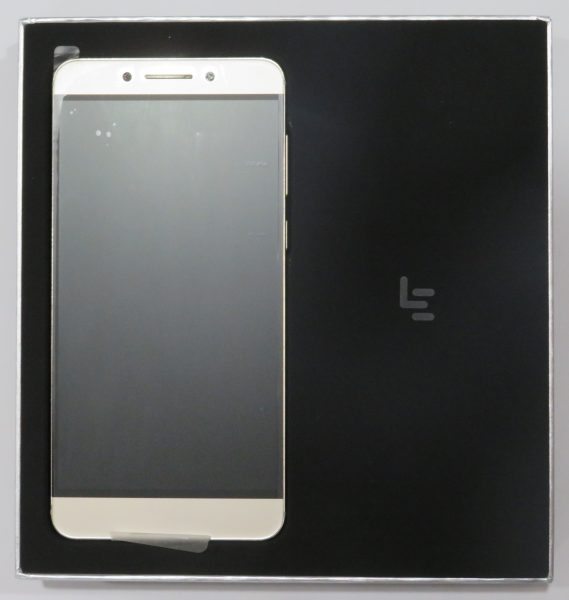
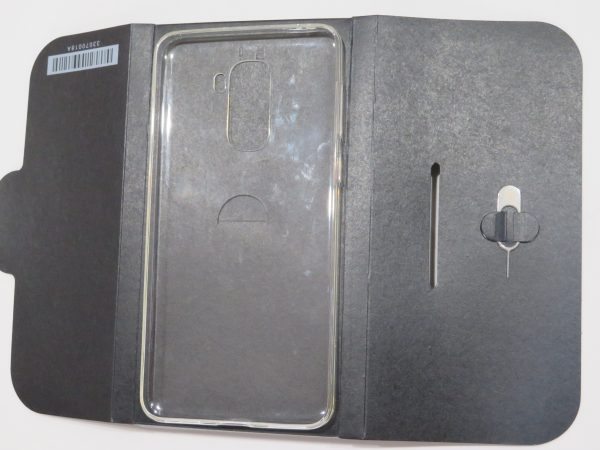 Opening the box reveals the phone on a plastic tray. Below the tray is another compartmentalized tray with the charger, USB cable, Type-C earbuds, 3.5mm adapter, SIM tray tool, TPU case, Quick User Guide, and Use/Safety/Warranty Information
Opening the box reveals the phone on a plastic tray. Below the tray is another compartmentalized tray with the charger, USB cable, Type-C earbuds, 3.5mm adapter, SIM tray tool, TPU case, Quick User Guide, and Use/Safety/Warranty Information
Design
The Pro3 phone dimensions are 151.4 x 73.9 x 7.5 mm (5.96 x 2.91 x 0.30 in) and it weighs 175 g (6.17 oz). This makes it about the same size and weight as the iPhone 7 Plus. The front of the phone is entirely covered in gorilla glass with radiused edges, except for the earpiece speaker grill, which is extended to be approximately flush to the glass. The top of the screen includes the ambient light sensor, the earpiece, the front facing camera and a multicolor notification LED. The bottom of the screen contains 3 capacitive buttons which are illuminated with a white LED when pressed. They are, from left to right: multitask, home (which looks like the Le logo), and back. They are illuminated on the featured image at the top of the page.
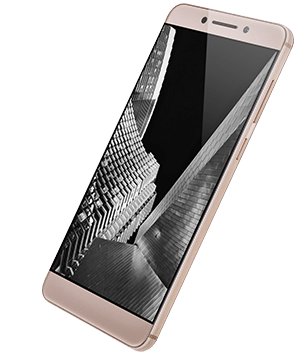
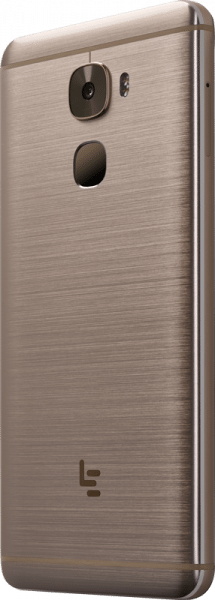
The sides of the phone are slightly rounded and includes a chamfer to the screen in front and a smaller chamfer between the sides and the rounded back. The chamfer in front seems to functionally hold the screen into place, while the chamfer in back gives your fingertips something to rest against, and also provides a transition from the circumferential brushing on the side of the phone to the horizontal brushing on the back. The top of the phone contains a microphone and IR LED (for remote control operation) the left side contains the SIM drawer, the right side contains the volume rocker and power button, and the base contains another microphone, speaker, and Type C USB port. The rear of the phone is a coated brushed aluminum. The aluminum appears lacquer coated but the Chinese Le site calls this a wax process. It looks almost identical to the coating on my Contigo Randolph mug, which is a type of translucent paint that has been known to peel and flake off. For now, the coating seems very robust but time will tell if it eventually wears. At the bottom of the rear there is an inset Le Logo in gold. The top of the rear includes a fingerprint reader and camera. The camera sticks out from the rest of the rear between 1 and 2 millimeters. The two tone LED is slightly inset from the rear to the right of the camera. The back is attractive, but a bit of a fingerprint magnet.
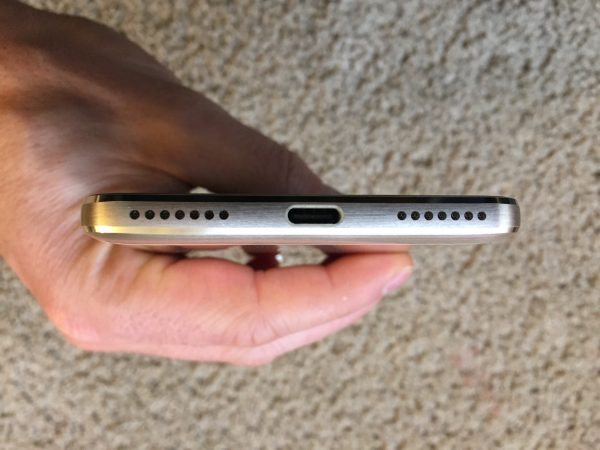
You may be thinking, “He forgot to include the location of the headphone jack.” No, I didn’t. The Pro3 only has a Type-C port for wired connectivity. The phone comes with a Type-C to 3.5mm audio adapter for plugging in audio (or credit card reader, for that matter).
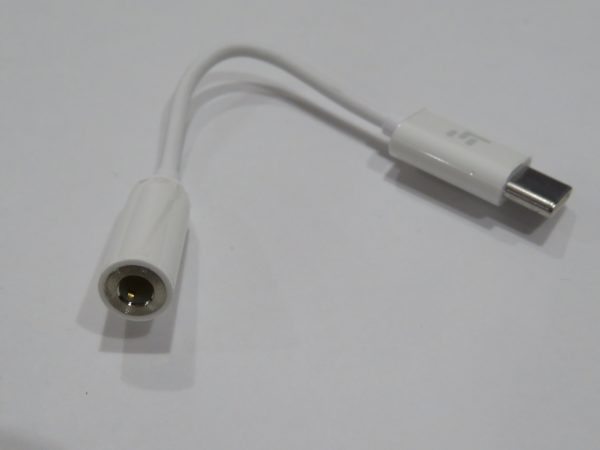
The type A end of the USB cable that it comes with is designed so that it will plug into a computer or charger in either direction and is especially designed to work with the higher wattage Qualcomm Quick Charge. Sadly, it appears that the phone only supports USB 2.0, and not the faster USB 3.0 standard.
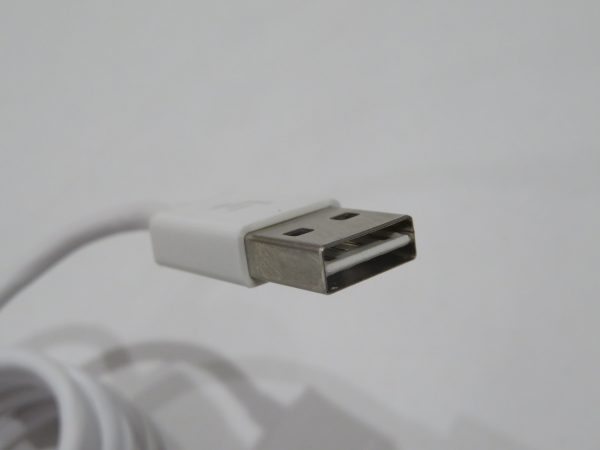
Another thing to consider is that because this is a new device to the market and is a relatively small player compared to Samsung, LG, Motorola and the like, that there are little (if any) 3rd party screen protectors and cases. Furthermore, as of this writing, Le hasn’t marketed a screen protector, so keep your phone well protected. Also, keep it dry, because in a world where phones are starting to become IP67 compliant, the Pro3 is not water resistant.
Display
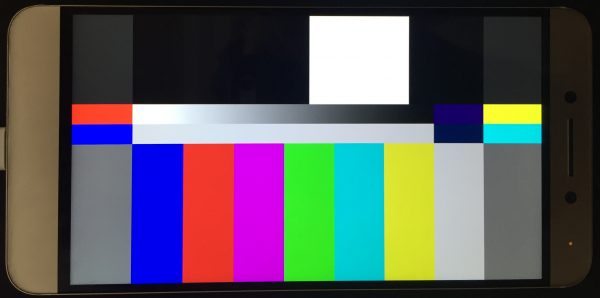
The screen, as indicated above, is a 1080 x 1920 5.5” 403 ppi design. Based on the screen and phone design, there is a 2 mm black bezel around the screen – this is no Samsung Edge. Some people make a big deal about the presence of a bezel, but I don’t think it detracts from the aesthetics or functionality of this phone. However, there’s something I can’t quite describe the appearance of the screen when it is off. It appears that it is mottled below the gorilla glass. In the picture below, when the staple is in focus, you can see that the reflection of the lamp looks slightly rippled. You can also see the rows of pixels where the reflection of the lamp meets the staple. When the lamp is in focus, reflecting off of the glass on the phone, you can see that the picture is sharp.
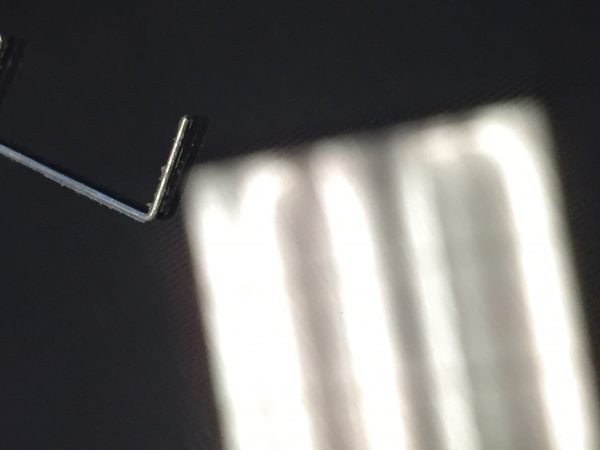
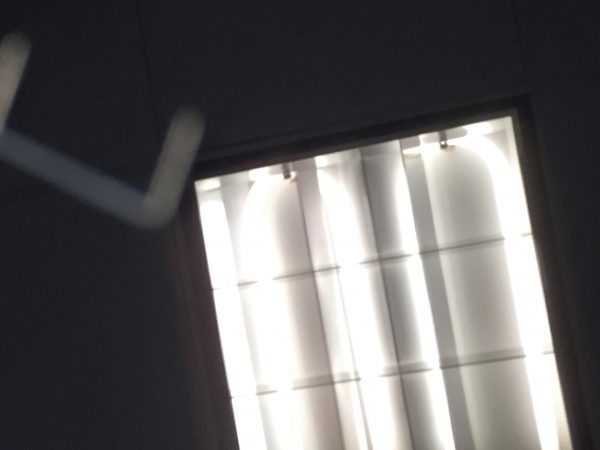
I didn’t notice this impacted the performance of the display. The display is bright and can be easily viewed outside yet the brightness can be reduced so that viewing the display in a completely darkened room is comfortable. The display resolution is perfect for looking at the display in normal viewing circumstances but shows some pixelation when using the phone inside of a VR headset. The OS has a color mode selector under the display settings. I tried recording using a screen recorder but the changes do not show up. In general, the vivid setting add saturation, the natural setting removes saturation, and the soft settings give everything a yellowish hue.
I also tried displaying the same color wheel on the iPhone 6 and the Pro3. Both screens were on full brightness and no color correction was applied. It does look like the image has less resolution on the Pro3 but I believe that the image was for the native 750 x 1334 resolution of the iPhone, so some pixelation occurs on the Pro3. The Chinese version of the spec page claims that the screen covers 80% of the NTSC gamut (It’s funny that only the Chinese site discusses compliance with a US national standard) which should accurately capture all of the RGB colors.
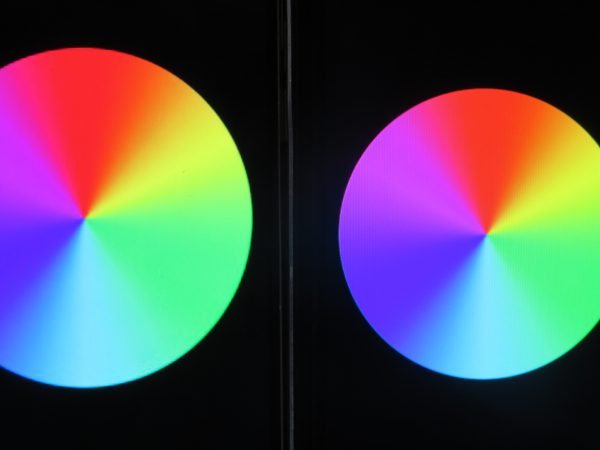
Processor
The Pro3 performance on AnTuTu Benchmark V6.2.6 was outstanding, with a combined score of 1599935, it finished 4th in the current rankings, just behind the Chinese variant of the same model, and only bested by the iPhone 7 and 7 plus. On geekbench the Pro3 has the highest single processor score on record. On Passmark , the phone earned an overall 8300, which ranked it above the Samsung Note 7 and below the Samsung Galaxy S7 edge. From a strict performance point of view, the Pro3 has tremendous value as a hardware platform, operating at levels equal to or above a phone that will either costs at least $150 more (unlocked) and another phone which will burn a hole in your wallet, your desk, your car, etc.
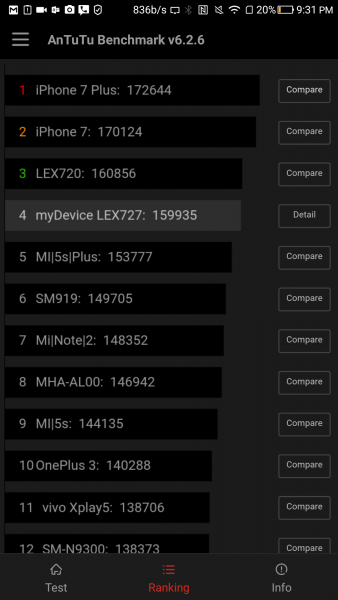
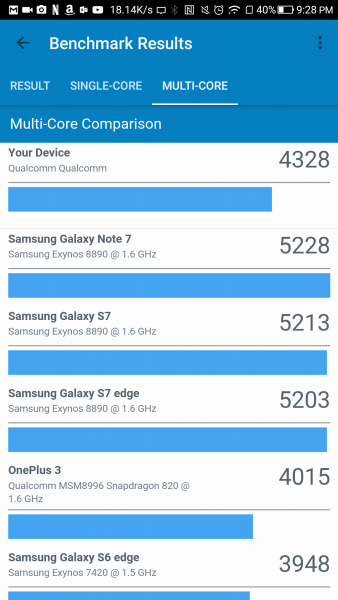
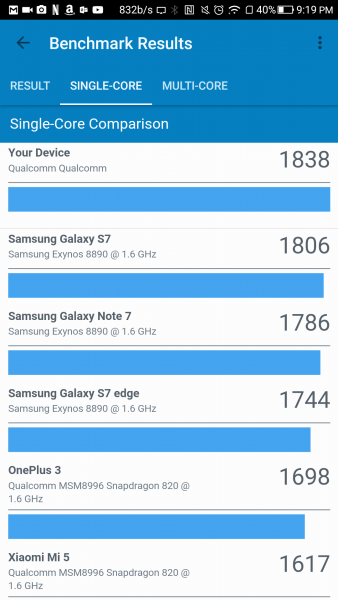
However, all these hardware benchmarks are worthless unless you can really appreciate how the phone works. I have been playing with Real Racing 3 and have not noticed any frame skips or loss of quality. I have also downloaded a few fractal explorers and have noticed how incredibly fast the screen refreshes. It’s funny to see what takes seconds now used to take minutes or hours on my old PC.
The processor works well with 4 GB of system memory and 64 GB of storage. However, there is no removable storage. This is a play to Le’s ecosystem providing cloud storage. They provide 5 TB of storage for a nominal fee, so not including removable storage is a way for the manufacturer to leverage their cloud storage offering.
Audio
The audio produced by the Pro3 s quite good. The included earphones have a type-C connector and are powered devices. To indicate that these are powered earbuds, Le has accented each with a glowing orange LED.
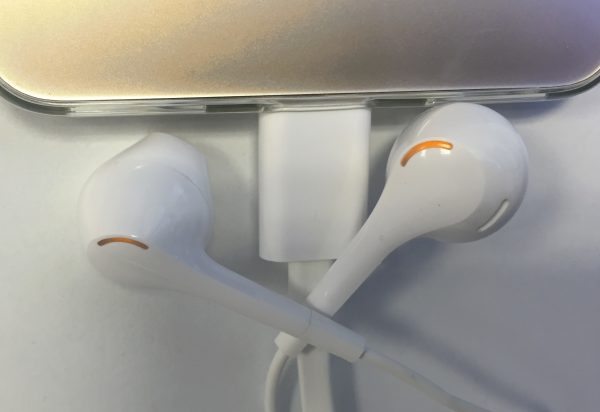
The cable is a flat USB style and splits to even lengths of left and right earbud. The left earbud has a microphone and single push button. (At least with Android you can say, “Make the volume louder/softer and get what you asked for.) Le has manufactured these earbuds with the digital processor in each earbud in a design it calls Continual Digital Lossless Audio (CDLA). I think that they sound much better than the iPhone buds plugged into the provided converter, yet still do not reproduce the highs as accurately as the Phiaton MS-300-BA earphones.
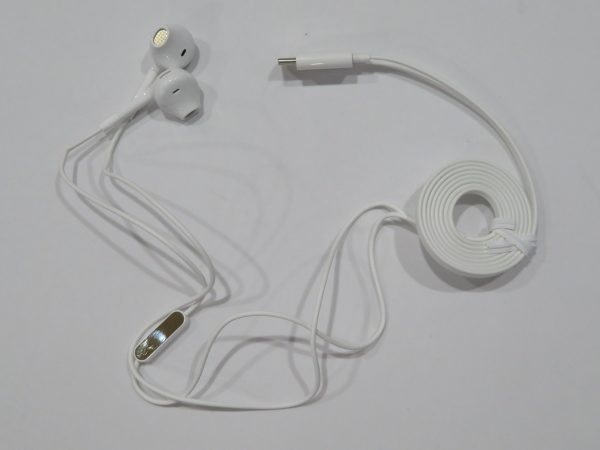
When not using earphones the earpiece speaker operates as loudly as the speaker mounted on the base, providing half decent stereo sound when viewing movies
Battery Life
The Pro3 has a whopping 4070 mAh battery, meaning that it can operate longer than most every other device out there. Best of all, if the battery is depleted then the Qualcomm quick charge can charge the battery quite quickly. It does this by sending close to 20 W through the USB cable. In my experience, I went from a room temperature, fully empty battery, to 43% in 30 minutes.
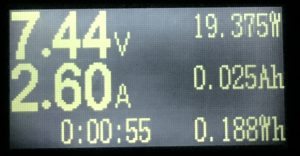
Antenna
The phone worked well on the T-mobile network. Calls were clear on both ends and even speakerphone calls came through loud and clear. The signal strength seemed to mirror the results that I got from an iPhone 5S, the other GSM phone I have in the house.
Camera
The camera image processor is quite good. The phone is capable of taking 4K video, as well. There are 4 primary operating modes: slo-mo, video, photo, and pano. Slo-mo is only capable with the rear camera. The video mode allows selection of 720P, 1080P or 4K recording, the presence of a shutter sound, and the presence of GPS data. The photo mode has a pull-up menu that has options for HDR, night, square, beauty, and scene. Scenes include landscape, beach, portrait, sports, and snow. The modes are saved in the app and persist even if the app is closed. The pano operates in horizontal and vertical modes – great if you’re at the base of the Eiffel Tower. The settings within the photo mode include timer, shutter sound, location, exposure, picture size, white balance, ISO, contrast, sharpness, and saturation. Note that the pictures below show overall quality, but have been reduced in file size by the web site.



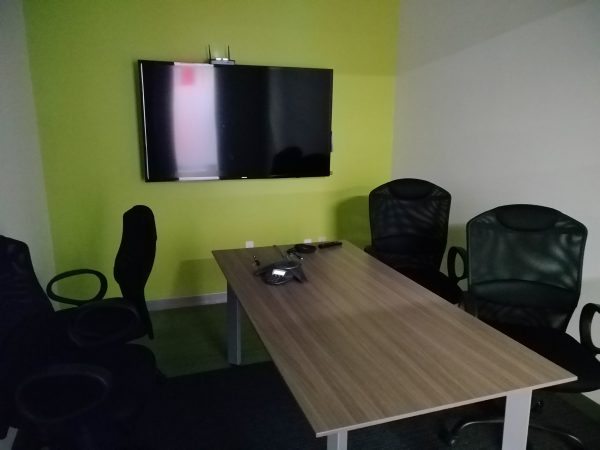
This is a darkened conference room with the lights off.


Other parts
Fingerprint reader
The reader can be a little fickle if the finger is not learned correctly, and the reader will try to get a read on only a swipe. If you get the reader to learn your print well enough then it is very responsive. As an added bonus, it can be used as the camera shutter for either the front or rear facing camera.
Compass and Accelerometer
The compass accurately determined the direction my house faces minus declension and also maintained orientation even if it was rotated. The accelerometers worked to sense gravity, acceleration, and orientation.
Proximity sensor
The IR proximity sensor worked well enough to know when it is near my head.
NFC
The NFC works to pair Bluetooth but Android pay is not enabled as of this writing.
IR remote
The phone comes with an IR remote and an extensive database of devices. However, it doesn’t appear that there is a capability for the phone to learn a new pattern. This is too bad considering that the phone couple easily use the camera for recording IR bursts.
Software
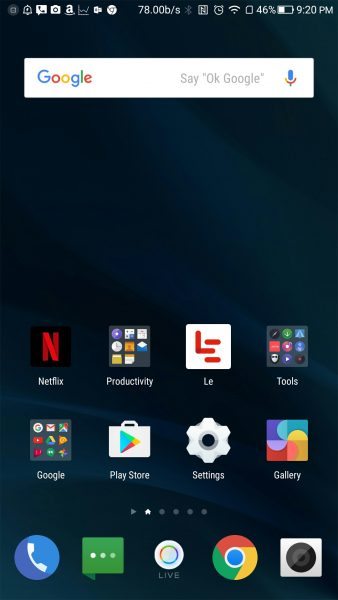
One of the first things you will notice about the as-delivered eui user interface is that it has a built in app, LeView, which lives to the left of the homepage screen. It is a type of YouTube app that aggregates videos based on topic. This is one of the content apps that is an integral part of the Le ecosystem. The annoying thing about this arrangement is that if the app is running then it takes the place of the homescreen image on the task switcher and it may make it difficult to find the image of the homescreen.

Another app lives at the center of the app dock called live. This really baffles me – it is an app that streams live cable programming. The app allows the stream to be rewound to specific times, but not necessarily the beginning of the program that ‘s streaming. It is a confusing app and easily bested by any of the customized content delivery apps of the user’s choosing (such as YouTube, HGTV app, SyFy app, HBO GO, etc.)
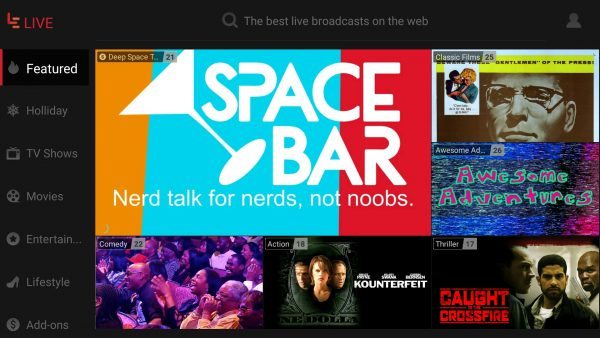
When discussing the display area above I mentioned that the hardware android buttons were multitask, home and back. The menu button on this phone has been revamped as a task switching / control center button. I actually really like this change.
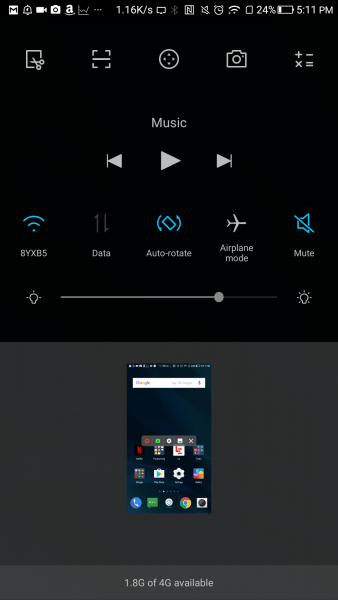
There are a few other apps that are installed on the phone: backup, file manager, note, system manager, audio recorder and video player. The file manager categorizes music, videos, pictures, documents, archives and apps. This is a beneficial feature if the user is overwhelmed by the vast directory structure of android. The system manager has some nice tweaks for data usage, power saving, phone cleaning, and speed optimization for apps.
The good news is that the phone has full access to the Google play store so that if you prefer a different app, or even an entirely different launcher, you’re able to download and install it. No sideloading required. If you do like the eui apps then you are in luck because you cannot get these anywhere else.
Conclusion
The Pro3 is worthy of consideration for anyone looking for a powerful unlocked GSM Android smartphone. The hardware components work well to provide an enjoyable user experience. The custom UI is not overbearing and flexible enough to permit other applications to be set as the default.
The LeMall, the online shopping presence of Le, occasionally offers the phone at deep discounts of up to $100. This means that the phone can potentially be had for $299. If you’re lucky enough to get this phone for such a price it is an incredible value.
Source: The sample for this review was provided by LeMall. Please visit their website for more info and check this Best Buy page to order.



Gadgeteer Comment Policy - Please read before commenting
Не работает телефон